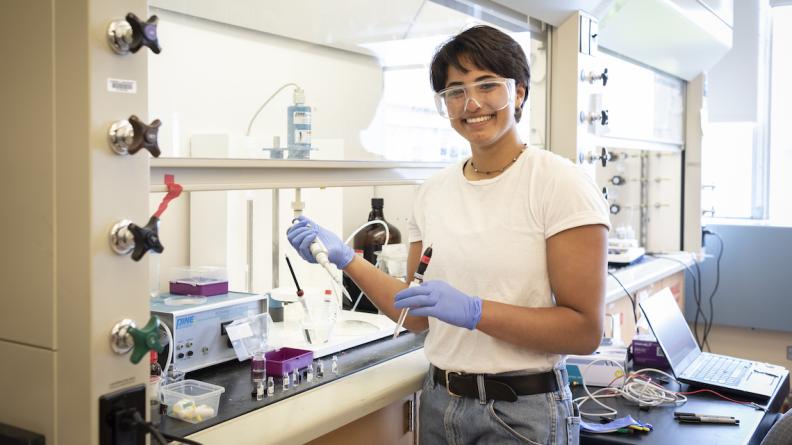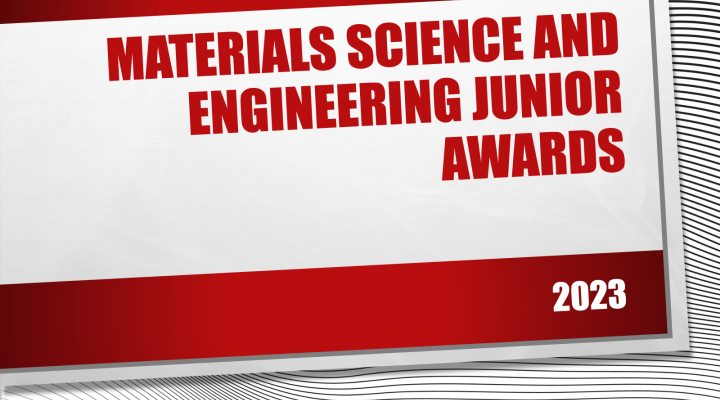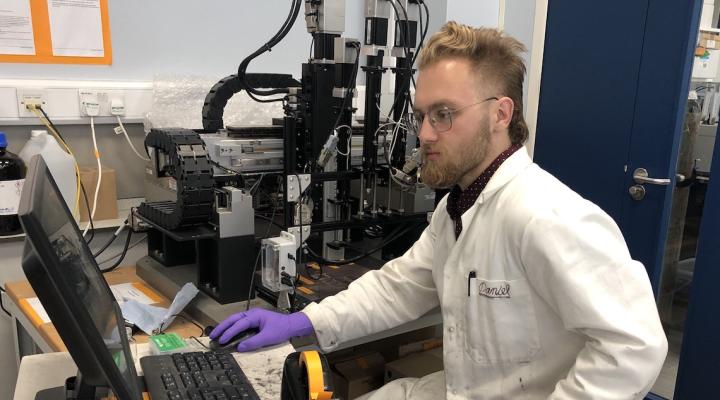They are making surgery safer, enabling clean biofuels, and helping to search for powerful new superconducting materials – and they are undergraduate students just getting started in their science and engineering careers.
About half of all undergraduate students at Cornell Engineering choose to join research labs, and for students in the Department of Materials Science and Engineering, it’s an opportunity to contribute directly to solving some of the world’s most pressing scientific challenges.
While some students volunteer or earn credits for their lab work, others are paid through programs such as the Undergraduate Research Awards offered by the Office of Engineering Learning Initiatives.
“Engaging in faculty-mentored research as an undergraduate exposes students to the process of discovery and the advancement of knowledge,” said Lisa Schneider-Bentley, director of Engineering Learning Initiatives. “The pathways to solving some of our world’s most pressing problems, and the steps involved, become real. The process of trial and error and the persistence required to make progress is also revealed. Students experience firsthand how their skills, knowledge, and passions can contribute to meaningful and important outcomes, and many find career direction and inspiration in the process.”
Materials science research projects enabled by Undergraduate Research Awards this academic year include:
Electrochemical upcycling of furfural
Natalia Urbas ’23
Suntivich Group
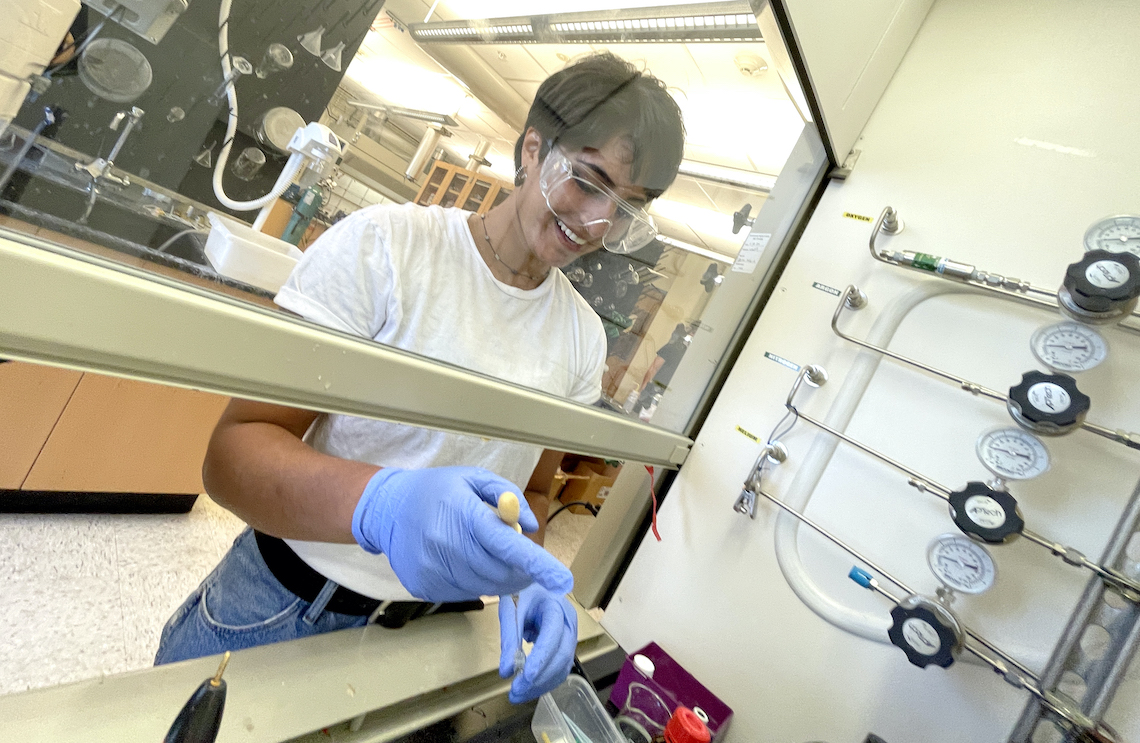
Urbas researched electrochemical upcycling of biomass compounds for the production of sustainable fuels, plastics and chemicals. Specifically, she researched the absorption energy of small molecules and their hydrogenation reactivity on platinum.
Epitaxy and characterization of Ga2O3
Bradley Morell ’24
Xing Group
Morell helped to grow and characterize crystals of gallium oxide, a material prized for its ability to handle high voltages, power densities and frequencies. Those attributes make it an ideal material for electric vehicles, renewable energy sources and 5G communications, among other applications.
Hierarchical assembly of nanoparticles into electrochemical electrodes
Monona Khare ’23
Robinson Group
Khare researched methods to assembly nanoparticles into electrodes through solution phase processing, for energy applications such as supercapacitors. The procedures she worked on could be used to scale up production and processing of nanoparticles produced by solution-phase chemistry.
A new X-ray probe for superconductivity
Dogan Tarik Karabay ’24
Singer Group
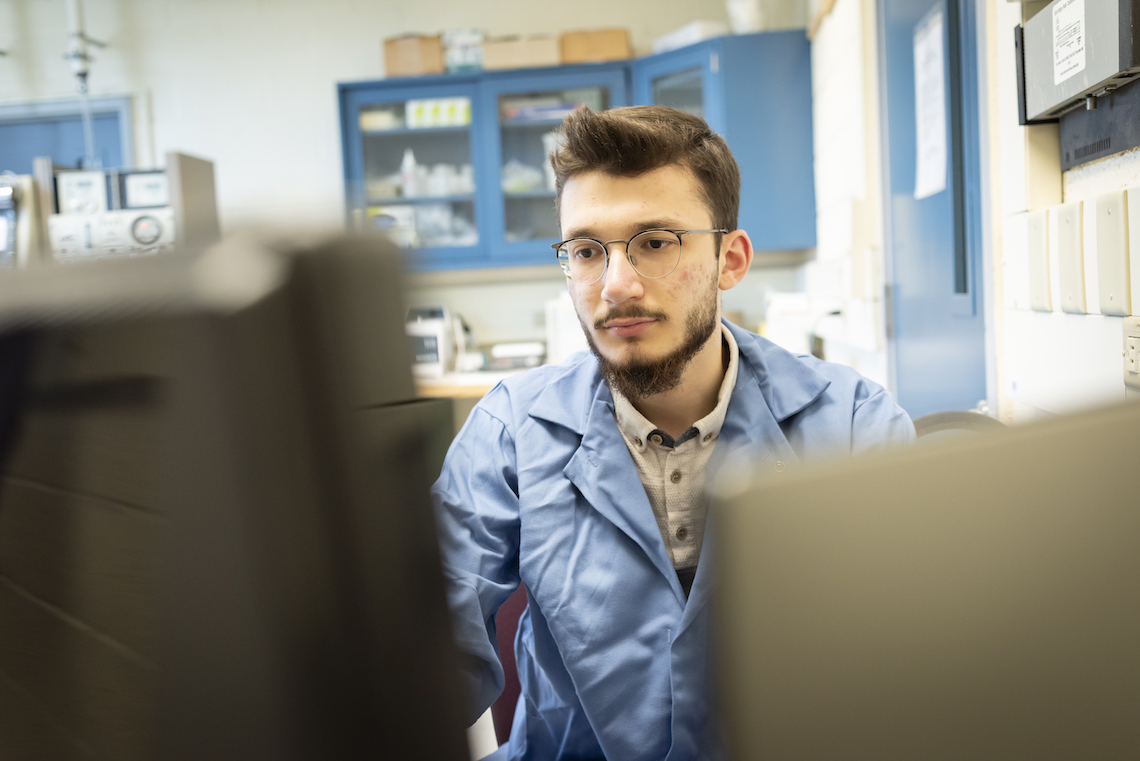
Karabay is helping to build a new X-ray probe for superconductivity. Using data obtained from the Cornell High Energy Synchrotron Source, he is intending to observe the Meissner effect in superconductor materials, which will contribute to the development of the probe.
Ordered and disordered hierarchical co-assemblies in magnetic handshake particle systems
Caleb Schlissel ’25
Dshemuchadse Group
Schlissel is conducting molecular dynamics simulations investigating programmable self-assembly systems. The research will help to understand how mixing different patterns of magnets placed within small acrylic panels could generate new behavior not seen in single-component systems.
Identifying effects of sterilization methods on properties of bone graft extracellular matrix
Kobby Adu ’24
Donnelly Group

Adu is helping spine surgeons better predict and treat complications due to surgery. He is using spectroscopy imaging data to look at mineral and collagen properties to identify the factors contributing to the risk of post-surgery complications.
To learn more about undergraduate studies at Cornell’s Department of Materials Science and Engineering, visit the undergraduate programs website. For more information about undergraduate research enabled through Engineering Learning Initiatives, read “Undergrads discover their research passion in the lab.”



